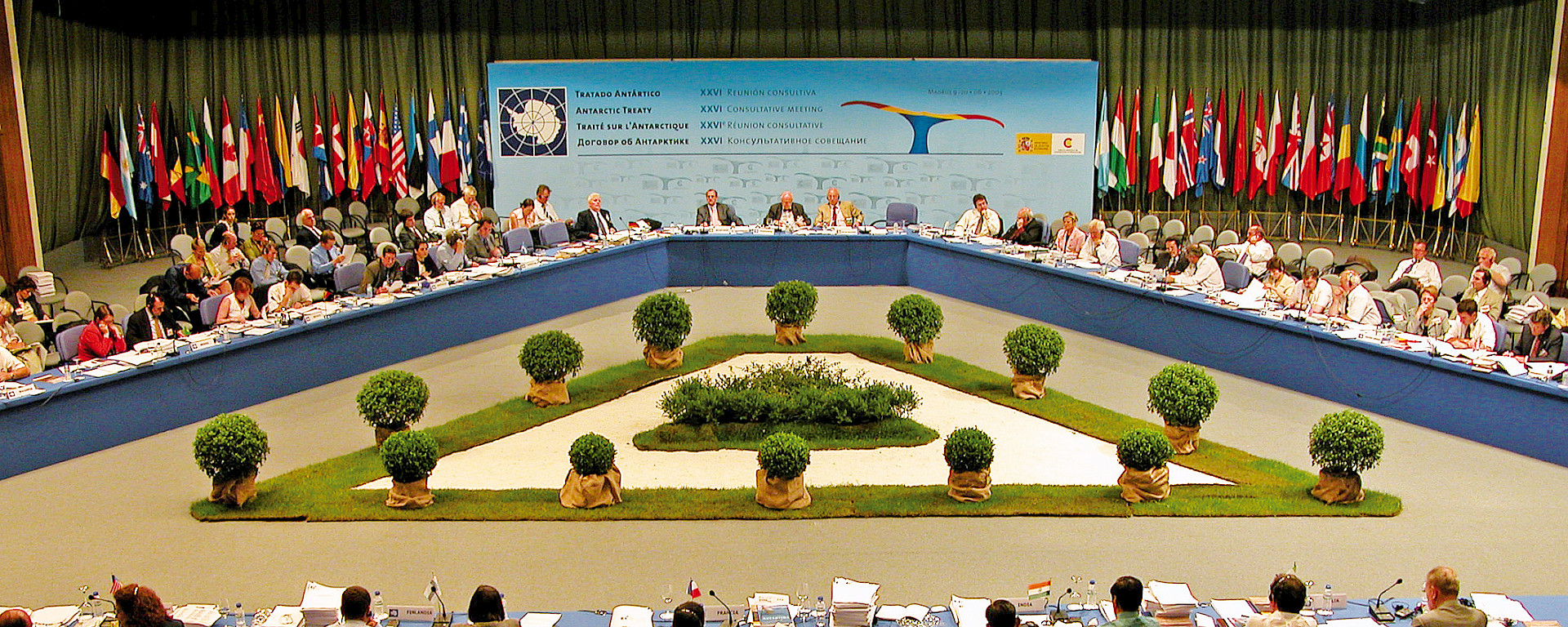Activities in Antarctica and its surrounding seas are governed by a unique set of agreements between nations known as the Antarctic Treaty system.
The Antarctic Treaty system is made up of 4 major international agreements:
- 1959 Antarctic Treaty
- 1972 Convention for the Conservation of Antarctic Seals
- 1980 Convention on the Conservation of Antarctic Marine Living Resources
- 1991 Protocol on Environmental Protection to the Antarctic Treaty.
These agreements are legally binding and purpose-built for the unique geographical, environmental and political characteristics of the Antarctic and form a robust international governance framework for the region. Legal obligations apply to all countries signatory to the agreements. The Antarctic Treaty system is a global achievement and has been a hallmark of international cooperation for more than 50 years.
Australia was one of 12 original Parties to the Antarctic Treaty. Many countries have acceded to the Treaty since it was signed in 1959. All countries with an active interest in Antarctica are Parties to the Antarctic Treaty. Parties meet annually at the Antarctic Treaty Consultative Meeting (ATCM), in conjunction with the Committee for Environmental Protection. Australia held the very first ATCM in Canberra in July 1961. In 2012 Australia hosted the 35th ATCM PDF in Hobart.
The Antarctic Treaty puts in place principles for the governance of the region including: freedom of scientific investigation and the exchange of scientific findings, non-militarisation of Antarctica and the Southern Ocean, and accommodating the positions of all Parties on issues of sovereignty.
The Protocol on Environmental Protection to the Antarctic Treaty comprehensively protects Antarctica as a natural reserve devoted to peace and science. Under the Environmental Protocol, mineral resource exploration, mining and oil drilling is banned indefinitely and the environment must be a fundamental consideration in the planning and conduct of all activities in Antarctica. The Protocol also provides for information exchange and a system of inspection.
Australia is also an original party to the Convention on the Conservation of Antarctic Marine Living Resources, and Hobart hosts its headquarters and the annual meetings of its Commission and Scientific Committee. The Convention’s objective is the conservation of Antarctic marine living resources, where the definition of conservation includes rational use. The Convention was the first international agreement to apply an ecosystem approach to marine living resources conservation.
Australia works closely with fellow Antarctic Treaty parties to ensure the effective governance of the region, to undertake important scientific research, and to conserve and protect Antarctica’s unique environment.
Australia has strong and longstanding interests in Antarctica which are protected by the Antarctic Treaty system. The Antarctic Treaty system maintains Antarctica’s freedom from strategic or political confrontation, protects its unique environment, and safeguards our sovereignty over the Australian Antarctic Territory.


